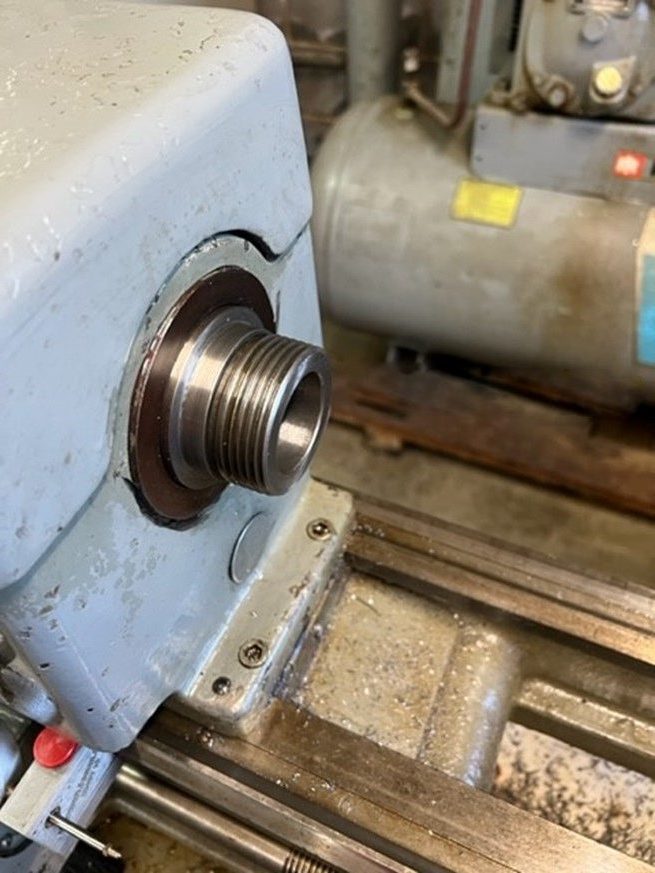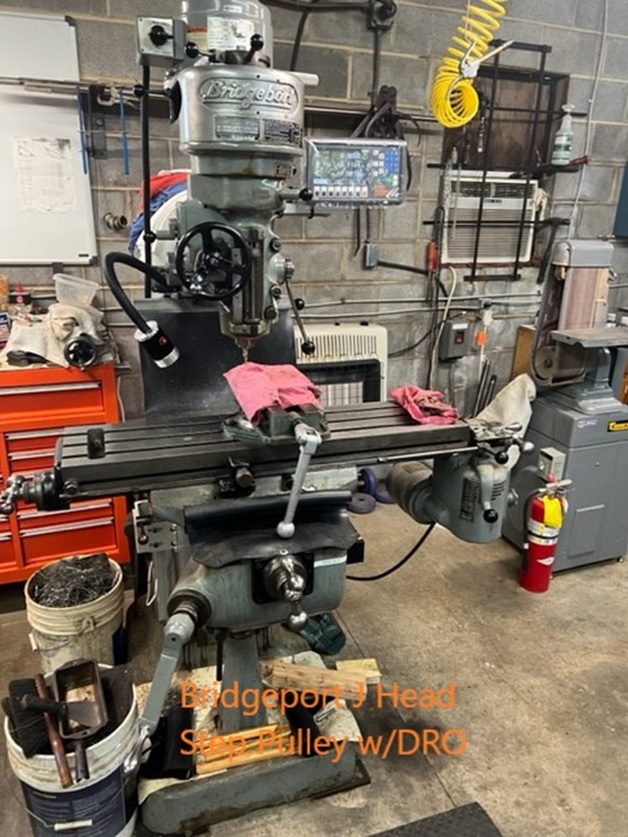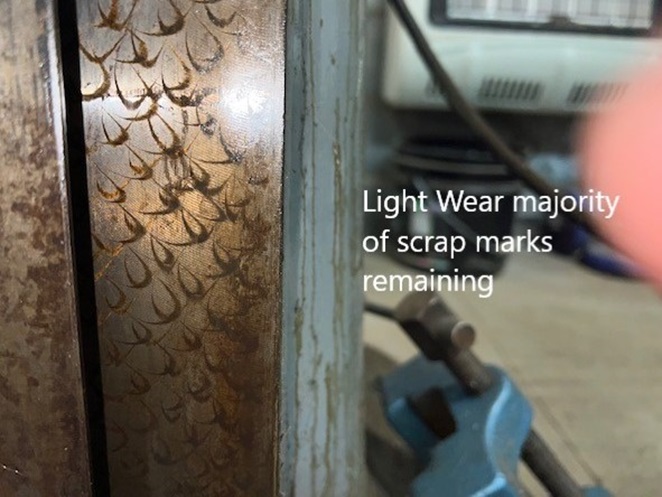I want to preface this article by saying that I have two machines in my shop that I find invaluable. Those being a lathe and a milling machine. Over the past 30 years or so I have purchased several lathes and a few milling machines to either upgrade what I have or to repair/refurbish and then sell. Some people like to restore old cars, I like to refurbish old machinery, and I have gotten some really good deals in the past.
I am going to focus mainly on manual lathes and milling machines in this article. I am not going to address CNC style machines here. I think CNC machines are good and they have their place, but unless you are into production, they are too complicated to be doing the work you would be doing in the gun shop and you don’t get the feedback like you do from a manual machine.
Along with a good belt sander and/or disc sander, a lathe and a milling machine are excellent additions to the shop for gunsmithing. You are now able to thread barrels, chamber, make parts, do custom work, and if you are like me, once I got a milling machine, I found that I no longer used or needed a drill press, so I sold the drill press and opened up more room in my shop.
I am going to assume that everyone reading this knows the meanings of the descriptive terminology pertaining to the machines that I will be using.
So, let’s get to it.
I see too many posts asking about the best lathe/mill combination machine to purchase. The problem with these style machines is that they are not good at either milling or lathe work unless it is small work and taking light cuts. The machines are so light that it is almost impossible to prevent chatter when machining. I wouldn’t even consider using these machines for threading or chambering a barrel. Also, you will probably find the machine set up for the opposite operation when you go to use it every time. As far as bench top lathes go, they do have their place and are handy for small work but due to their size you are limited to what you can accomplish with them. Hence, the reason to look for a medium size engine lathe or tool room lathe and a milling machine.
Another issue is cost. I have seen combination machines costing $5000 and up for new machines. If you find a good used one for sale there is a reason why it is for sale, it is not heavy enough to do what the person wanted it to do. I have a saying; it takes iron to make iron. Meaning, the heavier the machine, the better quality of the finished product.
I believe a person is better off finding good used machinery even if you may have to do some repair before you can use them. I have bought several machines over the years, some I have kept, some I have sold as is, and some I have repaired and sold. So, with that being said, there are deals out there buying quality machines if you search. I will list some of the venues that I peruse for deals later in this blog.
The first machine I will talk about will be the lathe. Lathes are identified in two ways; Engine Lathe and Toolroom Lathe. For simplicity, I will give the following descriptions. Engine lathes were usually found in the main production areas and were heavily used where Toolroom lathes were usually in a small remote area to themselves and used for special runs. There is a sub group mainly found on Engine lathes that are known as gap bed lathes, these lathes have a removable section in the bed, close to the headstock, that permits turning of larger diameter pieces. You give up some rigidity with this style lathe.
There are gear head lathes and belt drive lathes. There are pros and cons to both. Basically, the belt drive will give a better finish because you are not transmitting the gear harmonics through to the piece being machined. Also, the belt drive will give some protection for the machine itself whereas a gearhead is unforgiving. Meaning, if you accidentally crash the machine there is a good chance the belts will slip, but if you crash a gearhead machine you have not only ruined your work but you will be rebuilding the transmission because there will be one or two gears that didn’t survive the crash.
One of the advantages of gear head machines is the ease at which you can change speeds whereas on some belt drive machines it means you have to change positions on the sheaves to adjust speeds. There are belt drive machines that you can change speeds on the fly (I have one of those, a Clausing 5400 series) and they work very well until you get below about 60 RPM. At low RPM you may experience belt slip. There is a way around this though and it’s called a VFD (variable frequency drive), I will talk more about that later when I discuss powering 3-phase machines.

Now, let’s talk about the size of lathe that you may want and some of the specifications that you may want to look for:
What to look for and how to inspect a prospective purchase of a used lathe.

Here are some of the Lathes I have had experience with over the years and found them to be good machines:
As a side note, I have researched lathes sold by Grizzly and Precision Matthews in the past and thought if I were to purchase one of them, then I would get a model that was made in Taiwan and not in China. The reason being is there have been too many issues with the castings and the gears coming out of China.
Now let’s talk about Milling Machines or Knee Mills.
I myself own a J head step pulley Bridgeport, there are a lot of them out there, and they are reasonably priced. There are also variable speed machines. With variable speed machines you can change the spindle speed on the fly and you have a broader range of speed adjustment.
With the step pulley machine, you have 8 speeds that you can select by changing the belt on the pulleys and by utilizing the back gear.

I have purchased several over the years to flip and have paid as low as $100 for a completely functioning machine that I cleaned up, repaired if anything needed to be repaired, and verified it was fully functional. Then sold it for a very nice profit. I also purchased a very nice Variable Speed Mill made by Sharp that I had intentions of keeping for myself, but when I got it home someone seen it and offered me a very nice price for it, so I sold it too. (That one I regret)
The size of these machines will vary mainly in the size of the table. These machines are very heavy, weighing in between 1800 and 2300 lbs., and some may be heavier just depending.
Inspection is basically the same as for a lathe with a few caveats.
Here are some pictures of examples of scrap marks.



Here are some of the names of some of the Milling Machines I have experience with and find them very good machines:
Final side bar pertaining to machines, in my experience, I use my lathes more than I do the mill, but with that being said, I do custom rifle builds so I am turning, threading, and chambering a lot. I have used the mill to make a lot of special jigs to help me in tasks that I perform and it is invaluable for drilling and tapping receivers for scope mounts or making custom scope bases that can no longer be sourced. On top of all this, once people find out you have the capabilities for machining, you can get side jobs doing one off machining that the larger shops won’t do. When I do that type of work, I will charge $100/hour plus cost of tooling. In my experience, I have paid for my machines many times over.
Now, let’s talk about power requirements. Don’t be dissuaded if the machines you look at are three phase and you don’t have three phase power. There are a couple of different ways you can power those machines.
Here is a list of some of the places that I have found and purchased parts and/or used machines from:
If I find a deal, I don’t mind traveling to go pick it up.
One thing you want to keep in mind though, these machines are heavy, so be prepared to possibly hire millwrights if the place you are purchasing from can’t help you get the machines loaded. So that would be an added expense. A few years back, I bought two machines out of New Jersey from an individual that had them in his garage, I made arrangements for a millwright with a fork lift and machine skates to meet me after hours to get them loaded, it added about $350 to the purchase price but I was getting both machines plus tooling for a steal. I rented a heavy-duty trailer from Sunbelt, drove to NJ, loaded the machines, and drove back the next day. Even with the added expenses I still made a very nice profit on selling the machines and kept the tooling for myself.
So, deals are out there if you search and you can own some really good equipment for what you would spend on a combination set up and have equipment that would handle most any tasks that would arise. Good luck and let me know what you find!